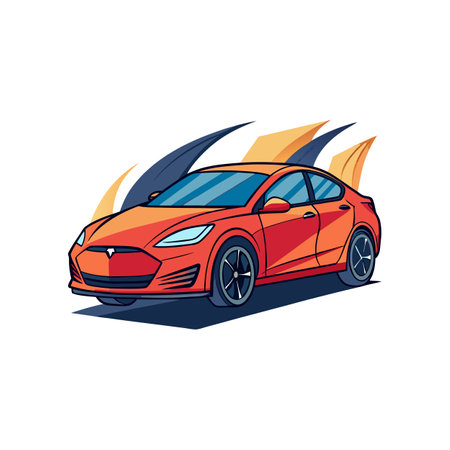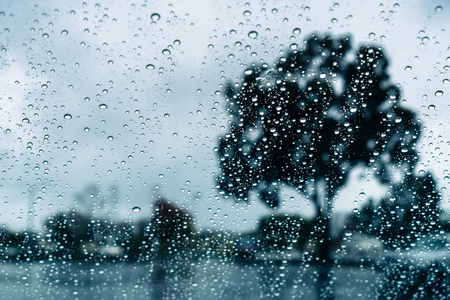1. Introduction to EV Adoption in India
India’s electric vehicle (EV) revolution is gathering momentum, powered by a growing consciousness towards environmental sustainability, government incentives, and rising fuel prices. Indian roads are now witnessing an increasing number of e-rickshaws zipping through crowded lanes, electric scooters weaving past traffic jams, and even electric cars cruising along expressways connecting major metros. However, the journey towards mass EV adoption in India is uniquely shaped by the country’s diverse and challenging climate—from the scorching summer heat of Rajasthan to the relentless monsoon rains in Mumbai, and the biting winter chill of North India. These climatic extremes pose real-world challenges that impact both the performance and reliability of EVs across different regions. Local demand is further spurred by urban air pollution concerns, government policies like FAME-II subsidies, and expanding charging infrastructure in cities like Delhi, Bengaluru, and Hyderabad. Yet, as more Indians consider switching from petrol and diesel to electric power, understanding how EVs perform under India’s varied weather conditions becomes not just a technical consideration but a daily lived experience for drivers across the subcontinent.
2. EV Performance in Indian Summers
Driving an electric vehicle during the peak of Indian summers is a unique experience, especially when you traverse through the sun-baked roads of Rajasthan or the bustling lanes of Telangana. The mercury often soars above 45°C, and this extreme heat presents several challenges for both drivers and their EVs.
How Summer Heat Impacts Battery Range
The intense summer temperatures can significantly affect your EV’s battery range. High ambient temperatures cause batteries to work overtime to maintain optimal operating conditions. As a result, you may notice a dip in the distance you can cover on a single charge. Here’s a quick look at how battery efficiency changes with temperature:
| Temperature (°C) | Estimated Range Impact |
|---|---|
| 25 (Ideal) | No impact |
| 35-40 | -10% to -15% |
| 45+ | -20% or more |
Stress on Cooling Systems
During long drives under the harsh sun, the cooling systems in EVs have to work relentlessly. Not only do they cool the cabin for passenger comfort, but they also play a crucial role in thermal management for the battery pack and other electronics. A robust cooling system becomes essential—if it’s not up to the mark, overheating can lead to reduced performance and longevity of components.
Charger Efficiency in Scorching Conditions
Public and home charging stations are also affected by high temperatures. Chargers may throttle charging speeds to prevent overheating, leading to longer wait times at public stations—a common complaint among Indian EV owners during May and June. Ensuring shade for chargers or choosing early morning or late evening slots for charging can help mitigate these issues.
Long-Haul Driving Insights: Rajasthan & Telangana Roads
Anyone who has driven from Jaipur to Jodhpur or Hyderabad to Warangal during peak summer knows that careful planning is key. It’s advisable to start journeys early, keep an eye on battery temperature warnings, and always factor in extra time for possible slower charging stops. While the summer sun tests both machine and driver, understanding these dynamics helps you make the most of your EV without breaking a sweat—even if it feels like you’re roasting in an Andhra tandoor!

3. Braving the Monsoon: EVs in Heavy Rainfall
When the monsoon arrives in India, it is nothing short of a force of nature—especially in cities like Mumbai and Chennai, where torrential downpours can last for hours or even days. For EV drivers, these heavy rains bring unique challenges that go far beyond just slippery roads. The first thing most notice is how EV traction responds to rain-soaked surfaces. Modern EVs are generally equipped with advanced traction control systems, but waterlogged streets in areas like Sion in Mumbai or T Nagar in Chennai can still test an EV’s grip, especially during a sudden cloudburst on a weekday morning rush.
Monsoon also transforms city roads into unpredictable obstacle courses. Potholes hidden under murky water, sudden patches of slush, and debris washed onto highways pose significant risks—not just to tyres and suspension but also to sensitive electrical components underneath the car. Waterlogging is infamous in low-lying areas such as Mumbai’s Andheri East and Chennai’s Velachery. Here, EV owners often face the anxiety of wading through knee-deep water, worrying about battery packs and connectors coming in contact with standing water.
Thankfully, most modern EVs sold in India are designed with a certain level of water resistance. Battery packs are typically sealed and placed at the lowest point of the vehicle to ensure stability and safety. However, repeated exposure to deep water over successive monsoon seasons can still raise concerns about long-term reliability and maintenance costs. Local service centres in cities like Mumbai are already adapting by offering specialised post-monsoon inspections for EVs to check for possible ingress issues.
Another aspect that comes alive during the monsoon is regenerative braking. In wet conditions, Indian drivers often find that regen braking on an EV feels more responsive than traditional brakes, helping maintain better control on slippery flyovers or winding lanes. But it’s crucial to drive cautiously—no amount of technology can fully compensate for reckless speeds during heavy rainfall on Marine Drive or Anna Salai.
For many Indian families who rely on their EVs for daily commutes, school runs, or weekend getaways to Lonavala or Mahabalipuram, planning ahead during the monsoon is essential. Apps that provide live updates on road closures or flooded areas have become indispensable companions for EV owners, helping them avoid getting stranded in notorious chokepoints during a downpour.
The monsoon season may put both drivers and machines to the test, but with proper care and awareness of local road conditions, Indian EV owners continue to brave the rains—proving that electric mobility has a place even amidst our country’s wildest weather.
4. Winter Chills and EV Range
While India is famous for its scorching summers, the northern belt—particularly Delhi, Punjab, Uttarakhand, Himachal Pradesh, and parts of Rajasthan—faces a biting winter chill from December to February. These low temperatures directly impact electric vehicle (EV) performance in several crucial ways, altering the daily experience for EV owners.
Battery Life and Range Drops in the North
In regions like Delhi and the hill states, night temperatures can dip below 5°C or even lower. Lithium-ion batteries used in most EVs are sensitive to cold: their chemical reactions slow down, reducing available energy output. Indian EV drivers often report a 10-20% drop in range during peak winter months. For instance:
| Region | Average Winter Low (°C) | Estimated Range Drop (%) |
|---|---|---|
| Delhi NCR | 5–7 | 10–15 |
| Shimla/Manali (Hill States) | -2–3 | 15–20 |
Charging Time: Patience is Key
The cold affects not only driving range but also charging speed. Battery management systems slow down charging to protect cell health at low temperatures. In real-world terms, charging an EV overnight in Gurugram or Dehradun during January might take an extra 30-40 minutes compared to summer. This becomes especially noticeable for commuters relying on early morning top-ups before heading out on NH44 or other major routes.
Cabin Heating: Power vs Comfort
Unlike petrol cars that use engine heat for cabin warming, EVs rely on battery-powered heaters. Cranking up the heater on a foggy Lucknow morning quickly drains the battery further, sometimes cutting effective range by another 5-8%. Drivers must strike a balance between comfort and reaching their destination—a dilemma familiar to those doing long winter drives between Chandigarh and Shimla.
Cultural Context: Adaptation Strategies
Indian EV users have responded with ingenuity. Many pre-heat their cabins while the vehicle is still plugged in at home, leveraging grid power instead of depleting the battery on the road. In hilly areas where charging infrastructure is sparse, drivers plan stops more cautiously and keep a thermos of chai handy for longer waits during slow winter charges.
5. Charging Infrastructure: Weather-Proofing the Grid
When driving an EV across India, from the sunbaked roads of Rajasthan to the rain-drenched highways of Kerala, one quickly realises that the performance of a car is only as good as the reliability of its charging infrastructure. Indias climate is anything but predictable—scorching summers, relentless monsoon rains, and chilly northern winters all put unique pressure on both drivers and the power grid. For those who count on their EVs for daily commutes or long intercity journeys, weather-proofing our charging stations becomes crucial not just for convenience, but for peace of mind.
Power Cuts and Monsoon Madness
During the monsoon, heavy winds and thunderstorms are notorious for causing sudden power cuts. For EV owners, this can mean arriving at a charging station with low battery—only to find it inoperable due to an outage. Many public chargers in metro cities like Mumbai or Bengaluru are now being upgraded with backup generators or battery storage solutions, ensuring that even during a downpour or blackout, you’re not stranded. However, rural areas and highways still lag behind, making route planning essential during the rainy season.
Dust, Humidity & Heat: Hidden Enemies
India’s summer heat isn’t just hard on batteries; it also takes a toll on outdoor charging equipment. Dust storms in North India can clog ventilation grills and sensitive electronics, while high humidity along the coasts can corrode connectors and terminals. Leading operators are investing in weather-resistant enclosures and regular maintenance schedules to combat these issues—but as any seasoned road-tripper will tell you, not all charging points are created equal. Always check reviews on local apps like PlugShare India before relying on a remote charger.
Building Resilient Networks for Every Season
The future of EV adoption in India depends heavily on building a robust and resilient charging network that withstands every season’s extremes. This means more than just waterproof covers; it calls for smart grid integration that can reroute power during outages, solar-powered backup systems in sunny regions, and regular monitoring against wear and tear. As more Indians embrace electric mobility, expect to see technology tailored specifically for Bharat’s diverse climate challenges—helping drivers charge up with confidence whether they’re facing summer’s blaze or winter’s chill.
6. Real Indian EV Owners: On-Road Experiences
When it comes to electric vehicles in India, nothing speaks louder than the voices of local drivers navigating our diverse climates. From the scorching summer highways of Rajasthan to the monsoon-soaked lanes of Kerala, EV owners across India have developed unique strategies—mixing practical wisdom with classic Indian jugaad—to keep their rides efficient and comfortable.
Highway Journeys: Beating the Heat
Ram, a Bengaluru-based techie, often drives his Tata Nexon EV between Bangalore and Chennai. He shares, “In peak May heat, AC usage drains battery faster, but I plan my breaks at fast-charging stations near dhabas and avoid driving in the hottest afternoon hours.” His advice? Always check for operational charging points on apps like PlugShare before starting long trips.
City Commutes During Monsoons
Mumbai’s monsoons are legendary for testing any vehicle’s reliability. Priya, who commutes daily in her MG ZS EV, highlights, “Waterlogging can be a concern, but I always check underbody insulation after heavy showers.” She adds that keeping window defoggers and regenerative braking on low settings helps maintain visibility and traction on slippery roads.
Chilling Winters Up North
Harpreet from Chandigarh says his Hyundai Kona’s range dips during North India’s winter months. “I pre-heat the car while plugged in at home using the app—it saves battery for the drive itself.” He also recommends carrying a portable tire inflator because cold weather affects tire pressure and efficiency.
Jugaad & Practical Tips from Experience
Across interviews, several patterns emerge among Indian EV users:
- Battery Management: Avoid full 100% charges unless needed; 80% is usually enough for city runs and improves battery life.
- Route Planning: Identify back-up charging spots along your route—a habit every Indian road-tripper knows well!
- Community Help: Join WhatsApp groups or forums where fellow EV owners share real-time charger status updates or even offer charging at home if you’re stranded.
The bottom line? India’s varied climate may pose challenges for EVs, but with a blend of common sense, planning, and Indian ingenuity, EV owners are showing that sustainable driving is possible—even in our extreme weather conditions.
7. Future Outlook: Innovations for Indian Climates
India’s diverse and challenging climate presents a unique testbed for electric vehicle (EV) innovation. The coming years promise significant advancements, driven by the needs of Indian drivers who navigate everything from sweltering summers in Rajasthan to heavy monsoons in Kerala and chilly winters up north. Stakeholders across the industry—battery manufacturers, automakers, and government bodies—are working hand in hand to deliver robust solutions that ensure EVs thrive throughout these extremes.
Battery Technology Tailored for India
The heart of every EV is its battery, and new technologies are being developed with India’s climate in mind. Advanced thermal management systems, which regulate battery temperature during scorching heat or biting cold, are becoming standard. Solid-state batteries—offering higher energy density and better safety—are on the horizon. Moreover, localised battery chemistries that handle frequent charging cycles during power cuts and protect against high humidity will soon become mainstream, ensuring reliable performance even in monsoon-soaked cities like Mumbai or Chennai.
Vehicle Design: Made for Monsoons & Heatwaves
Indian roads demand tough vehicles. Manufacturers are now engineering EVs with improved ground clearance for waterlogged streets, weather-sealed electrical components to withstand torrential rains, and enhanced cabin insulation to keep passengers comfortable during heatwaves. Features like regenerative braking tuned for stop-and-go city traffic and fast-charging capabilities tailored to Indian infrastructure are also emerging as must-haves.
Government Initiatives Driving Innovation
The Indian government is actively fostering EV adoption through policies like FAME II and the National Electric Mobility Mission Plan (NEMMP). These initiatives support research into weather-resilient EV components and promote local manufacturing under ‘Make in India’. Investment in widespread charging networks—including solar-powered chargers suitable for rural areas—will make it easier for Indians from all corners to switch to electric mobility confidently.
As we look ahead, the synergy between cutting-edge technology, rugged design philosophy, and forward-thinking governance promises an exciting era for EVs in India. With these innovations on the horizon, Indian drivers can look forward to a future where their EVs are as resilient and versatile as they are—ready to take on any weather the subcontinent throws their way.

